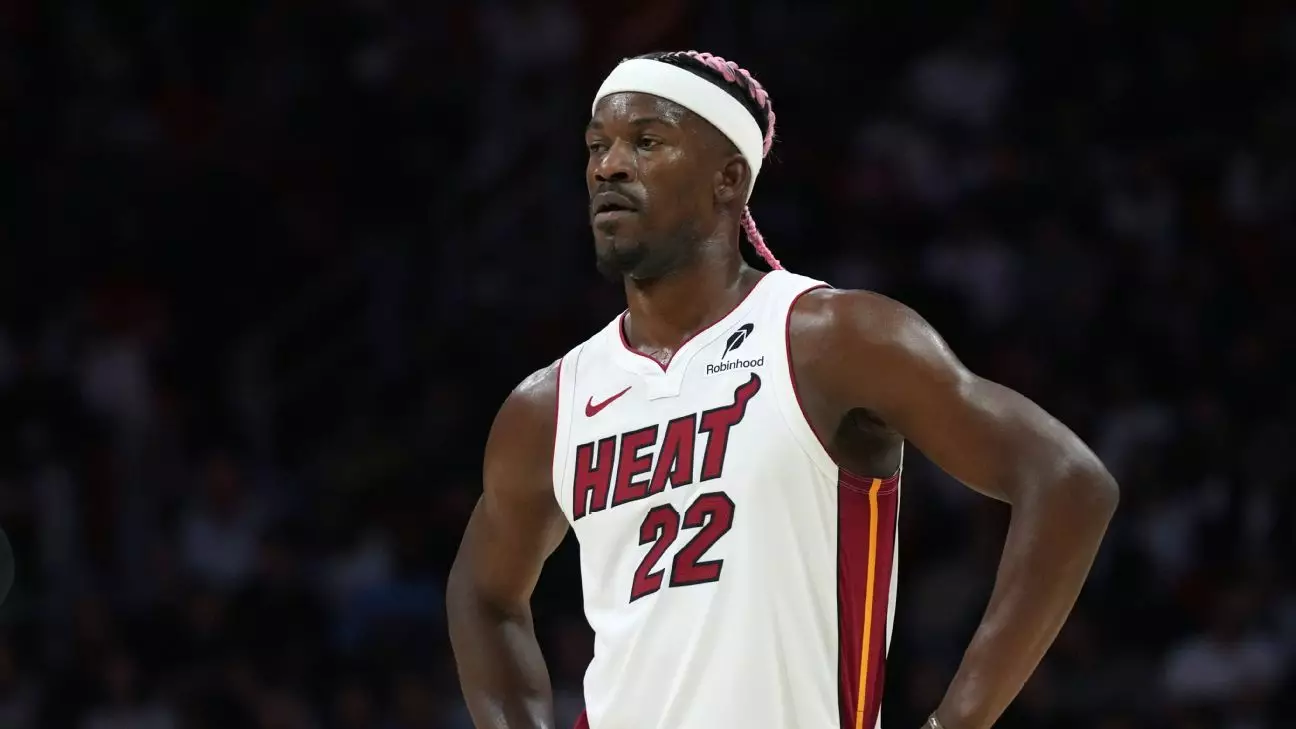Jimmy Butler’s return to the Miami Heat following a seven-game suspension has brought both relief and a heightened sense of urgency to a team grappling with internal and external pressures. The game against the Denver Nuggets, which culminated in a disappointing 133-113 loss for Miami, not only marked Butler’s return from the sidelines but also served as a critical juncture for understanding the team’s current strategy and prospects. Butler, who scored 18 points and contributed a modest three rebounds and two assists, played for 33 minutes, illustrating both his talent and the challenges that lay ahead for the Heat.
Compounding Butler’s return was the revelation that he had expressed a desire for a trade, prompting the Heat management to explore options to fulfill his request. Coach Erik Spoelstra’s decision to reintegrate Butler into the starting lineup showcases a blend of necessity and strategy. The display of Butler alongside key players like Bam Adebayo and Tyler Herro reflects Spoelstra’s understanding that this lineup gives Miami the best opportunity to win—at least in the short term. However, the looming trade discussions cast a shadow on team dynamics, with players and fans left contemplating the implications of a potential departure of their star player.
Spoelstra’s candid remarks during pregame interactions with the media reveal a deeper narrative concerning the atmosphere within the franchise. By asserting the professionalism of the team and downplaying queries aimed at the emotional state of the locker room, Spoelstra aims to maintain a level of focus and dedication to the upcoming games. His declaration that the challenges currently faced by the team are “complex” rather than dramatic is pivotal. It underscores his strategic philosophy—prioritizing performance and cohesion over the spectacle often sought by journalists and outsiders.
The media, eager for sensational stories, often provokes dialogue around the ‘drama’ that exists within NBA teams. Spoelstra’s insistence on focusing solely on basketball reflects his desire to curtail distractions, fostering a team environment conducive to high-level performance. As Butler re-enters this complex ecosystem, the balance between personal aspirations and team goals becomes increasingly delicate.
Statistical Performance Versus Emotional Resonance
Butler’s statistical output during his first game back may seem respectable, yet it raises important questions about his impact on the court. Contextualizing his 18 points against the backdrop of previous performances—the nine points and four assists during his last outing before his suspension—highlights the uphill battle faced by Butler. His post-game comments from earlier in the month, where he expressed a need to “get his joy back,” resonate in light of recent developments. If Butler’s head and heart are not fully aligned with the Heat as trade discussions intensify, his performance could suffer, thereby impacting the team.
As Miami navigates these uncharted waters, the situation surrounding Butler’s wishes exposes the larger tensions inherent in professional sports—balancing player autonomy with organizational strategy. The Heat’s front office is reportedly on the lookout for trade options that would yield immediate returns without compromising long-term goals. A scenario that involves a creative deal could benefit both Butler and the team, but as of now, fulfilling those aspirations remains an elusive task.
The Miami Heat find themselves at a crossroads, where the interplay of individual desires and collective ambitions defines their trajectory. Butler’s return symbolizes more than just the return of a talent; it underscores the intricate relationship dynamics at play within a professional sports organization. As the team seeks to regain its footing while respecting Butler’s wishes, fans and analysts alike will keenly observe how these developments unfold on and off the court. The Heat’s ability to maneuver through this complexity could very well define their playoffs hopes in the season ahead.


Leave a Reply